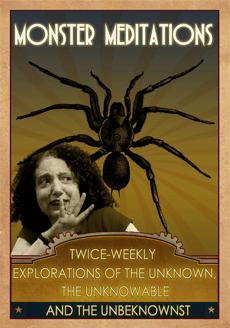TIME! Time is the hidden element in all storytelling. When I was a child I watched a lot of old movies on TV — old monster films with Boris Karloff, musicals with Fred Astaire or Ruby Keeler, comedies with Claudette Colbert or Rosalind Russell, mysteries with Humphrey Bogart and Lauren Bacall, and so many more…
A lot of classic Hollywood films, of all genres, relied on obvious indicators of time to condense or elongate time in the storyline. The pages of a calendar flying by, the branches of a tree quickly rolling through the seasons or the words “Ten Years Later” made time fly by. The hands on a clock, or sands through an hour glass, usually slowed time down, stretching out each minute and milking it for every emotional opportunity.
Real time, a minute for a minute, is much less common. Hitchcock used it in ROPE with James Stewart. He shot this cat and mouse style mystery, loosely based on the famous Leopold and Loeb murder case, without cut-away shots and edits. If you look closely, you can see when one can of film ends and the next one begins, as the camera lingers on an inanimate object in order to end/start filming. This is the opposite of Jack Bauer’s split screen days in 24. I’m not a fan of 24 (too much torture for me) but I can admire the way time is both elongated and compressed in order to pack every one of the character’s days to the max.
When I write, I often set a story into a specific time frame — a night, a weekend, a week, a month, a summer. It helps me focus the action and control the character’s responses. Right now, I’m working on a novel that extends over a period of years — in one timeline; a period of months in another; three generations in a third; and a little less than a year in still another. Juggling the various storylines is about managing the passage of time for the characters.
No wonder this book is making me crazy!





I liked the concept of 24, though I never really got into the show. 24 episodes with each one as an hour in the day, so much to choreograph. I always wondered what Jack’s life must really be like if that was just one day.
In addition to worrying about the moral compass of a hero so willing to torture, and so unaware of the impact that torture has on the quality of information gained, I worried about how anyone could pack so much into one hour. I’m a pretty high energy (and coffee-fueled) person, but his day was simply TOO PACKED! Again, I wasn’t a fan, but I saw several episodes and found myself wondering about trivial things, like how many multiples of that day’s outfit the production company bought and how actors, just like everyone else, have good and bad days in our appearance. He had to look the same for continuity. Right?
Still, I admire the ambitious and obvious use of TIME to build suspense and intensity. It’s often the hidden ingredient in a mix that adds excitement to a story.
There are times when I wish I wouldn’t have picked an alternating timeline for my first book, but there it is now and I’ve yet to fully make it work. Like Jon, the approach in 24 intrigues me, but I never got into the show. One of my favorite timeline twister movies was Memento.
Memento is one of my favourites as well!
I LOVE Memento!
What a great movie. I figured out what was happening early on and just rolled with it!
In my novel-in-progress, the narrator is writing about events that happened in 1999/2000 in NYC and B.A. Argentina, but the backstory of the characters goes back to the 1940s through the 1970s in Argentina.The narrator, is looking back from today, but she is in Italy. I’m driving myself crazy, just coping with the issues related to TIME — let alone when/where the voice of the novel originates.
LOL.. I’m driving myself crazy!
The odd flashback is about all I can manage before my brain tries to shutdown in self defense. That said, however, I do enjoy the complexity of parallel timelines when someone else is doing all the hard work. lol
A great movie and a great concept for a story!
I’m giving it my best TRY!
I like thinking about time in art in general. But think you have made some astute observations here. I am interested to see Rope to see what you are describing – not one I have seen yet. I like your musings.
You haven’t see ROPE?!
Definitely one that should be on the famous list of films to be seen.